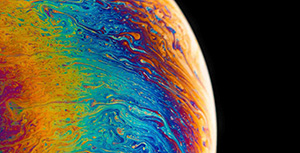pcm
Keywords
This option controls the use of the polarizable continuum model (PCM).
solvent
| Value | 7 real numbers |
water, acetic acid, acetone, acetonitrile, acetophenoneaniline, anisole, benzaldehyde, benzene, benzonitrilebenzyl chloride, 1-bromo-2-methylpropane, bromobenzene, bromoethanebromoform, 1-bromooctane, 1-bromopentane, 2-bromopropane, 1-bromopropanebutanal, butanoic acid, 1-butanol, 2-butanol, butanonebutanonitrile, butyl acetate, butylamine, n-butylbenzene, sec-butylbenzenetert-butylbenzene, carbon disulfide, carbon tetrachloride, chlorobenzene, sec-butyl chloridechloroform, 1-chlorohexane, 1-chloropentane, 1-chloropropaneo-chlorotoluene, m-cresol, o-cresol, cyclohexane, cyclohexanonecyclopentane, cyclopentanol, cyclopentanone, cis-decalin, trans-decalindecalin (cis/trans mixture), n-decane, 1-decanol, 1,2-dibromoethane, dibromomethanedibutyl ether, o-dichlorobenzene, 1,2-dichloroethane, cis-dichloroethylene, trans-dichloroethylenedichloromethane, diethyl ether, diethyl sulfide, diethylamine, diiodomethanediisopropyl ether, dimethyl disulfide, dimethyl sulfoxide, n,n-dimethylacetamide, cis-1,2-dimethylcyclohexanen,n-dimethylformamide, 2,4-dimethylpentane, 2,4-dimethylpyridine, 2,6-dimethylpyridine, 1,4-dioxanediphenyl ether, dipropylamine, n-dodecane, 1,2-ethanediol, ethanethiolethanol, ethyl acetate, ethyl formate, ethylbenzene, ethylphenyl etherfluorobenzene, 1-fluorooctane, formamide, formic acid, n-heptane1-heptanol, 2-heptanone, 4-heptanone, n-hexadecane, n-hexanehexanoic acid, 1-hexanol, 2-hexanone, 1-hexene, 1-hexyneiodobenzene, 1-iodobutane, iodoethane, 1-iodohexadecane, iodomethane1-iodopentane, 1-iodopropane, isopropylbenzene, p-isopropyltoluene, mesitylenemethanol, 2-methoxyethanol, methyl acetate, methyl benzoate, methyl butanoatemethyl formate, 4-methyl-2-pentanone, methyl propanoate, 2-methyl-1-propanol, 2-methyl-2-propanoln-methylaniline, methylcyclohexane, n-methylformamide (e/z mixture), 2-methylpentane, 2-methylpyridine3-methylpyridine, 4-methylpyridine, nitrobenzene, nitroethane, nitromethane1-nitropropane, 2-nitropropane, o-nitrotoluene, n-nonane, 1-nonanol5-nonanone, n-octane, 1-octanol, 2-octanone, n-pentadecanepentanal, n-pentane, pentanoic acid, 1-pentanol, 2-pentanone3-pentanone, 1-pentene, e-2-pentene, pentyl acetate, pentylamineperfluorobenzene, phenylmethanol, propanal, propanoic acid, 1-propanol2-propanol, propanonitrile, 2-propen-1-ol, propyl acetate, propylaminepyridine, tetrachloroethene, tetrahydrofuran, tetrahydrothiophene-s,s-dioxide, tetralinthiophene, thiophenol, toluene, tributyl phosphate, 1,1,1-trichloroethane1,1,2-trichloroethane, trichloroethene, triethylamine, 2,2,2-trifluoroethanol, 1,2,4-trimethylbenzene2,2,4-trimethylpentane, n-undecane, m-xylene, o-xylene, p-xylenexylene (mixture), 1,1-dichloroethane, 1-iodopentene, 1-pentyne, 2-chlorobutanebenzyl alcohol
|
|
| Default | None |
Specifies the solvent name. It can be either a predefined string listed in the table above, or a set of seven real numbers representing:
dielectric_constant, refraction_index, Abraham_alpha, Abraham_beta, abomaticity, halogenicity, macro_surface_tension.
radius
| Value | UFF: Uses UFF atomic radii for tessellation. |
Bondi: Uses Bondi atomic radii for tessellation. |
|
| Default | UFF |
Determines the type of atomic radii used for tessellation.
UFF is highly recommended, as Bondi radii data is incomplete for some common elements, such as Fe.
tss_method
| Value | Swig: Uses the Swig algorithm for tessellation. |
Switching: Uses the Switching algorithm for tessellation. |
|
Sphere: Uses the Sphere algorithm for tessellation. |
|
| Default | Swig |
Specifies the algorithm used for tessellation.
Swig is recommended for general purposes, while Sphere is useful for studies involving electron transfer.
grid_accuracy
| Default | None |
6, 14, 26, 38, 50, 86, 110146, 170, 194, 302, 350, 434, 590770, 974, 1202, 1454, 1730, 2030, 23542702, 3074, 3470, 3890, 4334, 4802, 5294302
Specifies the number of Lebedev points generated for tessellation.
A value of 302 is typically sufficient; for higher accuracy, 590 can be used.

